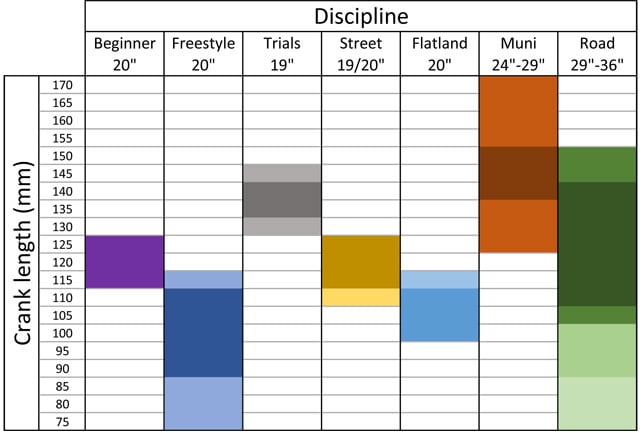
FREE SHIPPING on orders over $500 to the lower 48 United States
FREE SHIPPING on orders over $500 to the lower 48 United States
by John Foss
If you’re new to unicycling, you probably never imagined how many choices there were. In fact, even the unicycling world is still getting used to the idea. Before Unicycle.com existed, you could only find unicycles in bike shops or in the mail-order catalogs, and the choices were few. Mostly none.
Today you have nearly as many choices of unicycle types as you do for a bike or even a car. Lots of vehicle types for lots of price ranges and uses. What are those types, and uses? Let’s break it down, based on the category list in the Unicycle.com Catalog:
If you’re a new unicyclist, you may not know which of those categories suits you best. That’s okay, because most unicyclists start out with Beginner (regular) unicycles, then branch out from there. First you’ll learn to ride, and in time you’ll figure out what type of riding you enjoy most. So let’s start off with a definition of each category:
BEGINNER SERIES:
This is the “regular” unicycle category. They’re not just for beginners, but they’re the best place for beginners to start. Back before you could shop for unicycles online, this type was about all you would ever see in a store. Wheel sizes range from 12-inch to 24-inch. Good, basic, affordable one-wheeled transportation. If you’re just starting out or if you plan on doing just basic neighborhood or gym riding, this is what you want. Even if you plan to move on to something bigger or stronger, a basic beginner-type unicycle is always good to have, as a backup, and to teach your friends to ride on.
What’s a Learner Pack? Basically it’s a very good deal on some basic safety gear and a video. Each unicycle in the category comes with size-appropriate helmet, wrist guards and knee protection.
CRUISER (24-inch)
This category overlaps he Beginner category with some higher-end “regular” unicycles in the common 24-inch size. This is a great size for all-around unicycling as you can learn lots of tricks with it, cover some distance, and basically do a little of everything.
TOURING (26/28/29-inch):
Since unicycles are generally limited in speed by their wheel size, the most common way to speed on up is with a bigger wheel. The Touring category contains wheel sizes of 26-inch, 28-inch, and 29-inch may also be called 700c by cyclists, as it’s the rim size used on the vast majority of road bikes. Combined with a thick tire, you get wheel sizes up to 29-inch. So these unicycles are quite handy for getting around, while not being too large to easily fit in the car, or other places when not being ridden.
COMMUTING:
This category contains the fastest unicycles, 36-inch and larger. You can commute on a smaller wheel, and you can tour on a bigger wheel, so don’t let the category names rule your choices. Starting with just one 36” unicycle originally, this category started a revolution in long-distance unicycling and now there are lots of choices. Not only are there 36” wheels, but you can also get 2-speed hubs that will power a 24” wheel to the equivalent of 36:, a 29” wheel to 42”, and a 36: wheel to 54”! These unicycles are also available with optional brakes, to make long or steep downhill’s safer. You can also get handlebars, to take some of your weight off the seat and to provide a more aerodynamic riding position. You can also get antique-looking wheels in 43” or 48”.
ROUGH TERRAIN:
In its simplest form, rough terrain unicycling means riding on dirt. It’s more fun than you may think. In fact, Mountain Unicycling (Muni) has become extremely popular in recent years, and this whole category has formed to provide the equipment to fit your needs and budget. For off-road riding, you generally want a thicker tire with beefier tread, longer crank arms for leverage, and stronger parts, especially in the axle and crank arms. Wheel sizes generally range from 24” to 29” though the 24” rims in this category usually come out to about 26” with the tires on. A rough terrain unicycle can go anywhere a mountain bike can.
TRIALS:
Trials is the sport of overcoming obstacles. In a Trials competition you will see people hop and ride over cars, rocks, cable spools, logs, and anything else in their path. Trials unicycles are similar to rough terrain unicycles but with smaller wheel, and beefed up parts o help them withstand the constant hopping and jumping of this activity. Due to all the hopping and dropping, a good Trials unicycle really needs to have a splined axle/hub. That’s a special hub and crank system, such as Profile or ISIS, which is much stronger than the typical square-taper axle found on beginner type unicycles. The Trials category also contains some unicycles geared to Street and Flatland riding Street is where you combine Trials riding with tricks, and Flatland is where you do the tricks without any obstacles.
FREESTYLE:
These unicycles are for doing tricks, either for fun or on a stage or in a circus. Small riders might use 16” wheels and some do Freestyle on 24” wheels, but the vast majority of Freestyle riders use 20” wheels. A freestyle-specific unicycle will be stronger than the basic beginner types. It will also provide good foot support on the fork crown for one-foot riding and other skills. If you plan to ride indoors, be sure to choose a cycle with plastic-ended pedals, plastic bumpers on the seat, and a non-marking tire.
GIRAFFES:
These are tall unicycles, usually with a chain drive. Believe it or not, they are much easier to ride than they look. Ever try to balance a ruler on your hand? Notice how balancing a yardstick is much easier? Same idea. And even on a 6-foot tall Giraffe, your feet are only about 3’ off the ground so it’s not really as high as you think, even though observers will think you were ten feet up! This category also includes multi-wheeled unicycles. Didn’t think a unicycle could have multiple wheels? It can if you stack them up! The wheels drive each other by tire friction. A three-wheeler rides like a regular giraffe (only heavier). A two-wheeler has reverse-drive, which makes it quite a mind-bender to ride. Much practice required! But that’s what unicycling is about anyway, right?
ULTIMATE WHEEL:
This is basically a wheel and pedals, with nothing else. No frame, no seat. Great leg exercise and a great challenge, Unicycle.com makes the most beautiful Ultimate Wheels on the market. You can also build your own, with a rim, some wood, and a pair of GB4 pedals inserts.
IMPOSSIBLE WHEEL:
An impossible wheel is basically just a coasting wheel with a place to put your feet. Kind of like a one-wheeled skateboard, it’s not exactly impossible, but it’s not easy either! They are also known as BC Wheels, in reference to the Jonny Hart comic strip. Because they can coast, Impossible Wheels are the only unicycle type you don’t have to constantly pedal!
TRICK BIKES:
These things have two wheels, chains, and are otherwise overly complicated. In other words, from time to time, specialized bicycles are offered.
TRAINING TO BALANCE:
This category is for training devices that we sell, but that aren’t unicycles. Three wheels side-by-side? Not a unicycle, but good practice for balance, as well as leg exercise.
This is not an easy question, it depends what you want to do with your unicycle. All the unicycles are sold with standard length cranks but you can upgrade your unicycle with different size cranks. As a general rule, the shorter the crank the faster you can ride, the longer the crank the more control and power your can have. Cranks are measured from the center of the wheel to where the pedals are threaded in.
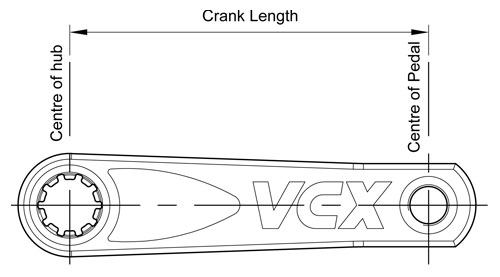
16" Unicycles
Can only be fitted with 100mm cranks or smaller otherwise the pedals touch the ground when riding.
20" Beginner Unicycles
114mm to 125mm cranks are a good length for most people learning to ride and introductory tricks. The rule of thumb is " the longer the crank arm the more control you have over the wheel."
20" Freestyle Unicycles
75mm are for advanced freestyle, 89mm are still too short for beginners but are good for advanced skills such as pirouettes, they are also ridden by some hockey players to go fast. 100mm cranks give a smooth fast ride but make idling harder, 114mm cranks are a good length for most freestyle tricks and hockey.
20"/19" Trials Unicycles
True trials riders use 137mm to 140mm cranks to maintain better control over the wheel and better pedal to tire transitions. 125mm are more common for riders that want to mix in more freestyle tricks into their street riding.
24" Beginner Unicycles (including Basketball and Race)
125mm cranks are smooth, fast, and still give you plenty of control for light tricks. 114mm cranks are very smooth and should only be considered if you want to go fast. 140mm and 150mm cranks are great for general all around riding.
24", 26", 27.5" & 29" Road Unicycles
114mm cranks make a great long distance machine for speed on flat surfaces but it can be very hard to idle and free mount. 125mm cranks are the go to size for general all around riding. Though 150mm cranks are considered long for road riding, those concerned more about control over speed find that this crank size is perfect.
24", 26", 27.5" & 29" Mountain Unicycles
150mm cranks are great for standard Muni riding. Riders looking for more control and leverage for hill climbing and technical terrain, the 165mm or 170mm is the length to use. Please note: for the 24" unicycle the longest crank size recommended is the 165mm.
32" & 36" Unicycles
150mm are ideal for a beginner learning to ride. For the intermediate to advanced rider, 125mm is the general do it all size. For riders who like a challenge and want to go as fast as possible 75mm, 89mm, 102mm or 114mm cranks will give you maximum speed with almost no control.

Early in 1999, when first we heard about mountain unicycling (MUni), we thought there were some nuts out there. But after taking a ski lift to the top of a mountain at Snoqualmie Pass, Washington, and riding down the bike trails, we were hooked. If one could combine the sports of snow skiing and mountain biking, it would be MUni.
The word MUni was coined in the UK by Duncan Castling. It's now a registered trademark of the Pashley Cycle Company in England.
George Peck, a soft-spoken magistrate living in Seward, Alaska, is credited with giving birth to the sport of MUni.
George created a videotape entitled "Rough Terrain Unicycling", giving tips and techniques that he'd learned on his own. It was sold by the Unicycling Society of America, and interest in the sport grew quickly.
In the UK, Roger Davies began off road unicycling around 1987. He was pictured in MB (Mountain Bike) UK magazine on his Pashley Muni 26" (a converted 24"). Visiting friends in California, he was riding down Mammouth Mountain in California, a 4 mile course.
At that point, Roger had never met any other unicyclist, MUni or otherwise!
Kris Holm, a geologist living in Vancouver, B.C. is a premiere MUni rider. Kris was the only unicyclist on the Norco Factory Trials Team, and held the world record in the unicycle high jump at 62cm (over two feet).
John Foss, a three time world unicycle champion, began hosting the California MUni Weekends in the Fall of 1996. He said the idea came to him while riding the trails, just after he moved to California. "I just gotta share this!" he said to two bicyclists friends nearby.
Promoting the event on the Internet and word of mouth, John soon discovered the lure of off road unicycling. The first California MUni weekend was attended by 35 riders. By the 1999 event, the number of riders grew to 55.
There are three types categories of trails that MUni riders enjoy:
Rough terrain: This is generally a trail that has some combination of rocks large and small, fallen trees, stumps, undergrowth and mud.
Uphill: This is the toughest of MUni trails. It requires an extraordinary amount of leg strength and endurance. Mountain unicyclist Ted Howe rides uphill trails for fitness.
Downhill: These trails are the most fun. The best way to begin your downhill trail ride is on a ski lift. Seriously! Take a lift to the top of a mountain and ride down the bike trails. It's an absolute blast.
MUni pioneers like George Peck and Kris Holm built their own off road unicycles, in some cases spending thousands of dollars. Riders like Bruce Bundy and Geoffrey Faraghan applied mountain bike technology to theirs.
Unicycle: The best off road uni's to date are built with some combination of these components, at minimum:
Safety: We recommend wearing all of these items when you MUni:
Unicycle.com started 20 years ago when it became the first on-line unicycle store in the world. This was the idea of John Drummond, a copywriter for IBM in Atlanta. He was an enthusiastic unicyclist and had found it hard to find any advice on what and where to buy his unicycle – so he thought he would start up a specialist one-stop store for unicyclists.
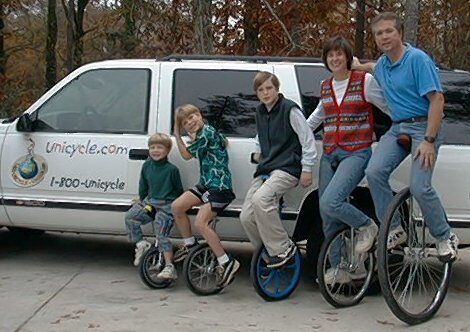
The Drummond Family
John started contacting all the manufacturers of unicycles he could find and asking if he could buy them to sell online. Some of these were bicycle manufactures like Sun and Torker who were easy to get hold of. The companies he really wanted to get in touch with were the specialist unicycle companies, who produced high quality unicycles, like Semcycle, Miyata and DM Engineering. It was on one of these speculative phone calls that put him in contact with Roger Davies in the UK.
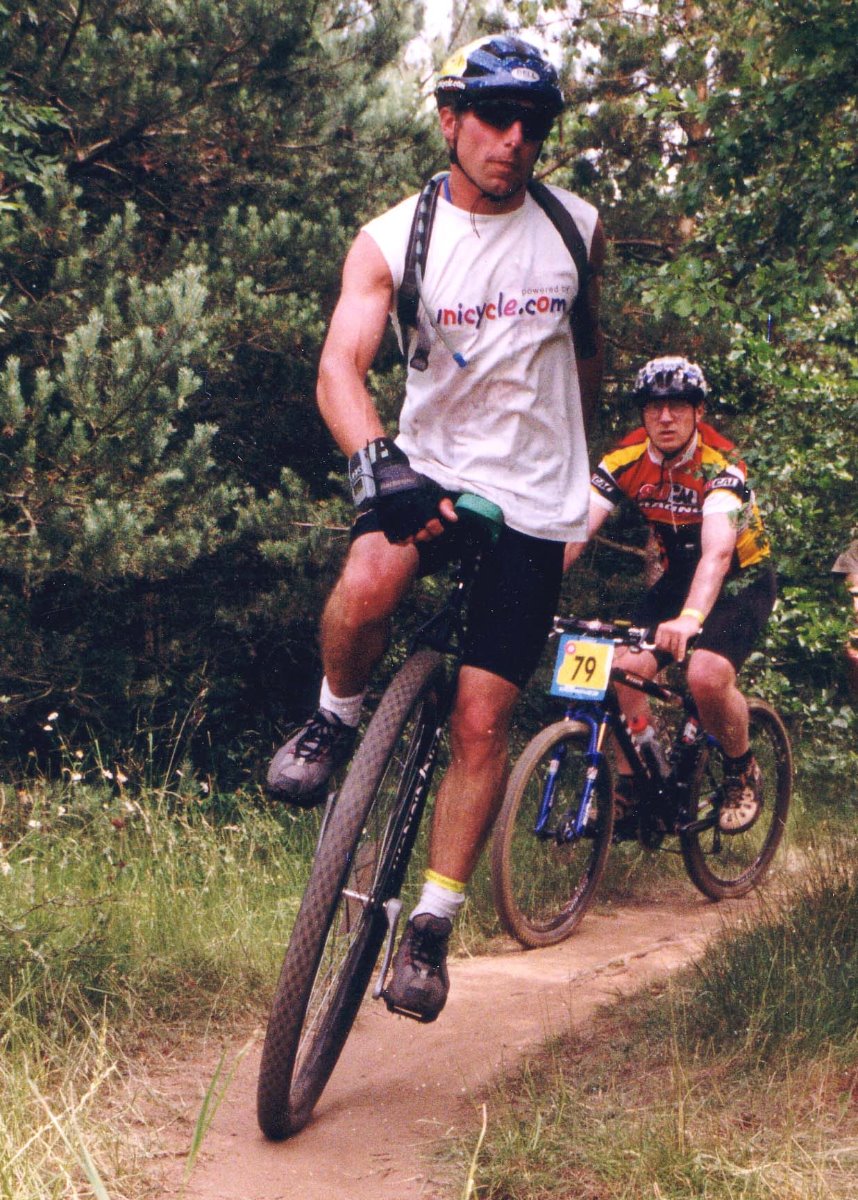
Roger Davies competing in Mountain Meyhem
Roger was a product designer who was running a small design company in the North East of England. He had been featured in the magazine of the Unicycling Society of America for being one of the pioneering people behind the new sport of mountain unicycling (Muni). He had also designed and built a range of carbon fibre unicycles that he rode and sold.
The conversation with Roger did not go as John had expected. He had thought he would just be putting in an order for some unicycles or possibly getting an endorsement for the new company; what he ended up with was a partner in the business. Roger had skills John did not have. He had contacts in Europe to get the unicycles and parts and he also had a business background. There was also another side to the relationship that John had not realised initially and that was that Roger knew how to design better basic unicycles.
The US store was launched in March 1999. The UK store was launched in October 1999. The US site opened with the domain of Unicyclesource.com as they had not by that time secured the Unicycle.com domain. John’s persistence did succeed in getting the domain in the end and the “source” got dropped by October 2001 to become Unicycle.com.
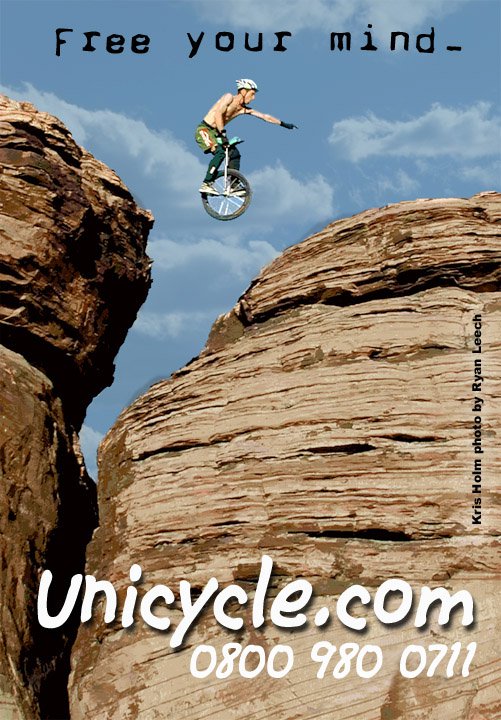
The store sold as wide a range of unicycles and spares as they could. The intention right from the start was to be the one-stop shop for unicyclists to buy their unicycles and spare parts. Roger realised very quickly that buying from other manufacturers was not going to work in the long term. The margins and specifications of the unicycles were not good enough. To start with, he went directly to the manufacturers in Taiwan and imported a container of unicycles and spare parts. Although these had been specified as the best unicycles; they were only suitable for the beginner unicyclist.

An early Taiwanise import
The next job was to try and improve the specification and design of the unicycles. Working with one standard unicycle manufacturer was very limiting. With the help of Mike Poyza at Onza Cycles, Roger found a new agent who was willing to build up unicycles to an exact specification.
This agent allowed Unicycle.com to specify everything. It was not a matter of always picking from a catalogue of mediocre parts. The new components were specified down to a material level. This was the real beginning of the Unicycle.com brand.
The new unicycles came with Cromoly hubs, wider hub flanges and aluminium cranks. It was often the little changes that made the bigger difference in the quality of the unicycles. The nuts were all anti shake and the spokes were always stainless steel. The unicycles were also given their own brand, “Nimbus Unicycles”, under the Unicycle.com branding.
In 2003 Unicycle.com was approached by Peter Bier, Steve Pavarno and Tony Melton from New Zealand asking if they could become part of the Unicycle.com. In June 2003 they became the first Unicycle.com franchise. The franchise group has increased over the years:
With all the franchises ordering at the same time it allowed Unicycle.com to expand its’ product range to include many different unicycles. This also allowed for the creation of the first production trials unicycles under the Nimbus branding.
Another big structural change happened in 2001 when Amy Drummond started to take a lead roll in the management of Unicycle.com USA. John had started to take a back seat and was looking for other projects, this included Banjo.com which he started in 2003. John left the company totally in 2013.
Josh Torrans, General Manager of Unicycle.com USA joined the company in 2007. With his 8 years of knowledge of the bike industry, he brought many ideas for advancing the Nimbus product line and what a unicycle can look like. Thanks to Josh, we now have unicycles with disc brakes on them, the doublequick clamp and the fat tire unicycle, the Hatchet (formally known as the Oregon).
Over the last 20 years, Unicycle.com has been expanding and developing the range of unicycles and parts that it sells. Unicycle.com has tried to create ranges of products under specific brands.
Unicycle.com has not only worked on developing their own range of products but has worked with other unicycle companies to include them in the Unicycle.com group.
Schwinn started producing unicycles in the 1970’s as a sideline to their bike production. By the 2000’s Schwinn was bought by Pacific Cycle and the unicycle line was about to be phased out. Unicycle.com asked Schwinn to take on the development and production of their unicycles under licence in 2003. These are now part of the Unicycle.com range of products.
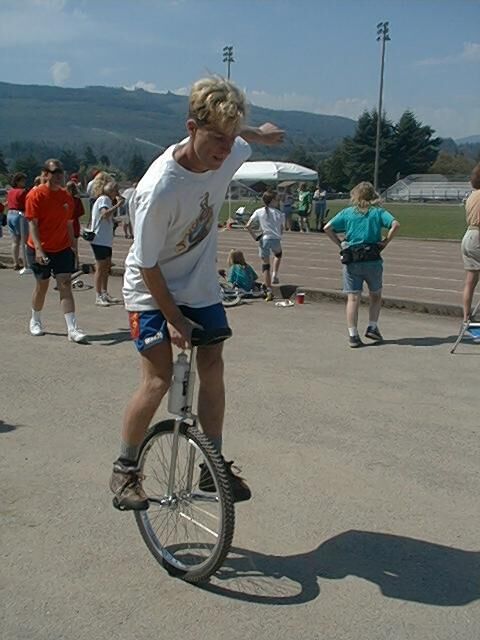
Kris Holm circa 2000
Kris Holm Unicycles started their production in Canada, but it was with the help of Unicycle.com that their production was moved to Taiwan. Kris Holm unicycles have synchronised their production runs with those of Unicycle.com and have been part of the Unicycle.com offered products since 2003.
Unicycle.com now owns Impact Unicycles, but it did not start out that way. In 2002 a young man called Benjamin Guiraud came to Unicycle.com in the UK to do part of his apprenticeship. Benjamin or as he is more commonly known, Yoggi was a keen trials unicyclist. After graduating he went to work for Koxx Bikes in France and started a sub-brand for them called Koxx-One unicycles. Unfortunately, this did not last long as Koxx bikes stopped trading and this forced Yoggi to start making his own unicycles under the brand “Impact Unicycles”. This company produced specialist trials unicycles that were sold primarily through the Unicycle.com network. They gained a good reputation as being competitive standard trials and street unicycles. Yoggi found that without a larger company backing him it was not a viable enterprise and sold Impact Unicycles to Unicycle.com in 2014.

Josh Torrans - General Manager at Unicycle.com USA
Unicycle.com is proud to have been servicing the unicycle community for the last 20 years. Our customer base has supported us with sales and ideas as we have grown throughout the years. We appreciate the friendships that we have with our customers immensely. Unicycling is a small niche of the bicycle industry, which makes us fiercely creative in wanting the attention we feel this great sport deserves. Being a unicyclist makes you stand out in a crowd and because we know that learning to ride a unicycle takes fortitude and patience, we salute each and every unicyclist who sticks to it and learns to ride their unicycle. We look forward to taking over the planet one wheel at a time.

Josh, Amy and Roger